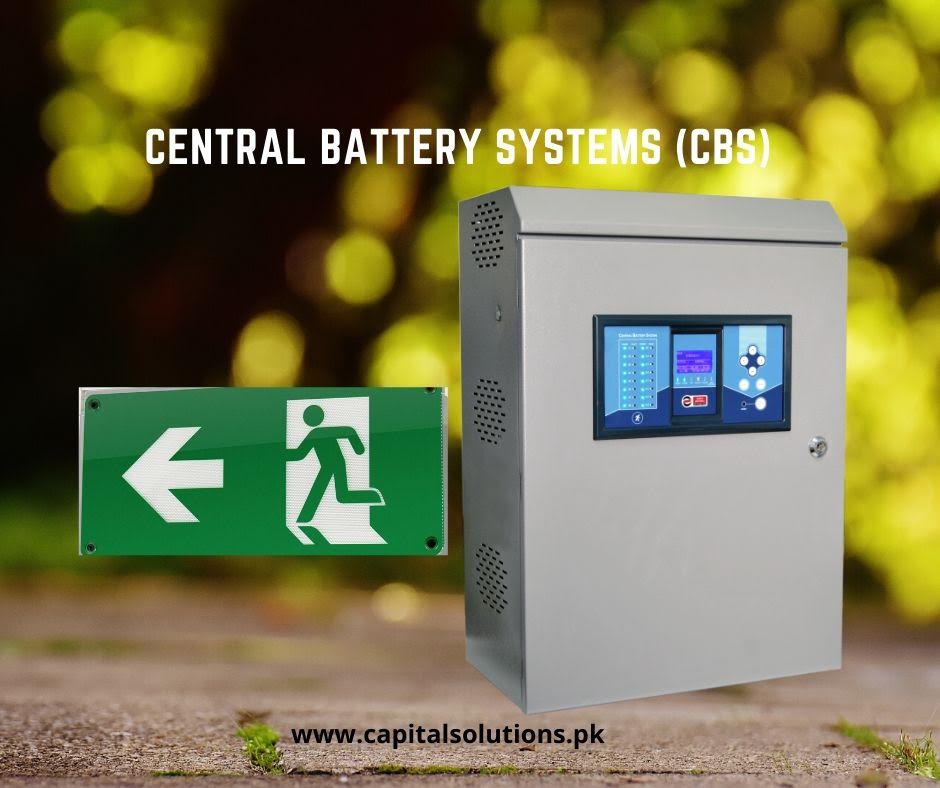
For any project, whether big or small, complications are always to arise. Power outages are not uncommon especially since the whole world depends on it for their day-to-day usage. Backups must always be present in the situation of power outages so that all individuals are able to find their way and don’t lose themselves to confusion or turmoil. For the same reason, emergency lighting is used.
Emergency lights and signs are always placed in crucial areas such as emergency exits, first-aid points, near important signboards or fire escapes. The amount of lighting may vary according to the project but almost every building or construction site will have those. One can opt for one of the two options; whether installing the traditional emergency lights or to install CBS based emergency lighting also known as central battery systems. Both options have their own pros and cons however, in most instances, CBS systems will win the race.
Comparison
Autonomous luminaries, or Traditional emergency lights (self-contained emergency lights) are emergency lights that one can purchase easily from their local electronics store. They can be used within one’s home or in small offices. In many instances, they are also utilized in large quantities in larger buildings. In simple words, Autonomous luminaries are individual emergency lights. Each unit will have its own battery, capacitor etc. within a casing. Even if they are to be used in large quantities, each light will have to be toggled and maintained separately.
Central battery systems will use a central unit to which all emergency lights will be connected. Typically, there are 4 main outputs and a large amount of emergency lights are connected to it. CBS based emergency lighting will always have only one central battery and one super capacitor. In simple words, CBS based emergency lighting will have a singular unit which caters to all lights. An AC/AC static inverter system will be connected directly to the luminaries. The lights will operate at full output regardless of the number of lights attached. The control will be through a sub circuit system. Typically, central battery systems are deployed in large buildings or large scale projects where the amount of emergency lights is a lot.
The central battery system is able to monitor all of the circuits connected to the main power supply or battery. Any settings saved in the system will not be lost even in the situation of a complete battery failure. A central battery system will have central unit control and testing.
Features
Some key features of central battery systems are given below:
- LCD Display with user friendly toggling
- Automatic detection and monitoring of luminaries
- Automatic detection and monitoring of circuits
- Luminaries can be programmed and configured from the central unit instead of being done individually
- An SD card slot which uses a memory card to store logs, performance results and also enables the entire system architecture to be backed up
- USB port
- Can be connected to any computer for direct communication
- Integration with any building management system
Benefits
There are numerous benefits of central battery systems. These include the following:
- Compared to Autonomous luminaries/self-contained emergency lighting, CBS based emergency lighting have a better energy efficiency. This factor can make a huge difference in terms of longevity and cost saving.
- Maintenance costs are lower for central battery systems. This is because maintenance of a single, central battery will be less troublesome and cost saving as opposed to maintenance of multiple batteries for multiple units. In terms of time and money, both, the cost will be considerably lower. Same is the case for supercapacitors of these lights.
- The inspection procedure for central battery systems as opposed to autonomous luminaries is a lot easier. In CBS based lighting, the main panel reports any faults in any of the lights presently deployed alongside. Through notifications, the main panel will be alerted to faulty lights and will even specify which ones! The main panel runs a routine inspection on its own. Thus, the installer can benefit a lot from automation and time saving instead of having to go to each individual light to inspect whether any light is non-functional or not.
- In light of all the aforementioned reasons, installation of CBS systems will result in long term cost savings in terms of money and time both. For large quantities of emergency lights and signs, the cost will definitely prove to be lower.
- An autonomous luminary battery has an average life of 3-5 years. A CBS system battery has an average life of 10 years.
Conclusion
Although CBS systems are usually installed in large buildings and projects where the amount of emergency lights are in large quantities. However, the benefits will still be present if the number of emergency lights were to be lesser.
Although autonomous luminaries can be used in smaller buildings, we definitely recommend using CBS systems for their longevity and numerous other benefits. Also, if there is a limitation on the initial investment then CBS systems may not be the best option. However, the long term costs should also be kept in mind.
When installing central battery systems, it is important to ensure luminaries which have a high level output do not exceed uniformity factor limitations in low ceiling areas. The customer’s preference is a key part of the combination of the central battery system to be installed. The cabling should always run through an area which has a low fire risk. The specifications of the cables being used also play a very major factor in the installation phase. The battery also requires ventilation.
When installing central battery systems, always seek technical assistance in the installation phase.
About Capital Solutions
Capital Solutions provides state of the art fire protection and safety equipment, emergency lighting and CBS Panels of European brands in Pakistan. If you need emergency lighting and Central Battery Systems (CBS) CBS panels then Call us for complete service from installation to maintenance.